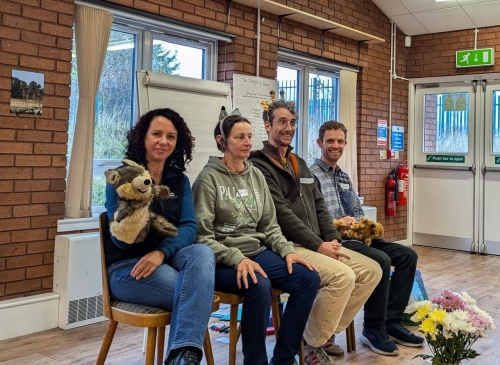If you take a step back and really listen to everyday conversations – at home, at work, even just in passing, you might notice how much judgment and blame come into play. I know I’ve noticed it in my own interactions, and it’s surprising how quickly we default to criticising or labeling rather than seeking to understand. In a way, we’re still a bit “caveman” in our communication. Just like our ancestors, we’re wired to be defensive and protective, especially when there’s any hint of conflict.
How Judgments and Blame Sneak into Everyday Language
It’s easy to slip into judgment without even realising it. When we feel challenged, it can feel like second nature to say things like, “You’re never listening” or “You just don’t care.” These statements are rooted in how we feel but often come out as blame toward others. For many of us, this is simply the language we’ve grown up hearing. Our early experiences, social norms, and even media have conditioned us to communicate in ways that are quick to blame or judge rather than to express or connect.
But what if there’s a different way? A way to talk that doesn’t rely on finger-pointing, but rather helps us understand and be understood?
A Course in Nonviolent Communication (NVC)
This curiosity about better ways of communicating is what led me to attend a foundational course on Nonviolent Communication (NVC). I wanted to see if I could break away from those default “caveman” patterns, both in my personal relationships and in my work. The course was eye opening.
The main idea behind NVC is simple but powerful: instead of leading with judgment or blame, we can connect by focusing on our own feelings and needs. It’s about owning our responses rather than projecting them onto someone else. NVC encourages a few core practices:
1. Observe Without Judgment: Describe situations factually rather than interpreting or labeling them.
2. Express Feeling: Share what you’re genuinely feeling, instead of masking emotions with accusations or defensiveness.
3. Identify Needs: Acknowledge the unmet needs behind these feelings.
4. Make Clear Requests: Request specific actions in a way that invites cooperation rather than demands.
Examples of NVC in Practice
I found the shift from blame to understanding to be especially powerful. Here’s how it could look in practice:
Instead of saying, “You never take my advice,” which can feel critical, NVC might suggest expressing it as, “I feel discouraged when my input isn’t considered because I need to feel valued in our decisions. Would you be open to discussing ways we could make decision making more collaborative?”
Or take a statement like, “You’re always so negative.” This could be reframed to something like, “When I hear repeated criticism, I feel frustrated because I need positivity and support. Could we try focusing on potential solutions together?”
The Impact of Shifting Our Communication
Shifting to this kind of language requires practice, but I can already see its benefits. Rather than getting trapped in resentment or bottling up issues to avoid confrontation, I now feel more empowered to face conflict head on, with empathy as a guide. NVC has helped me understand that often, when we’re angry or frustrated, we’re actually struggling with unmet needs, not just with the other person’s actions. Recognising this has been incredibly freeing.
If you’re curious to learn more about NVC or want to explore a course, you can find resources at https://www.tomwilkinson.info. Whether in professional settings, family life, or friendships, learning to communicate without judgment and blame can open up new possibilities for connection, respect, and understanding.

